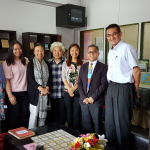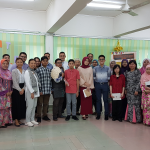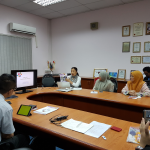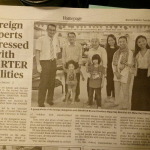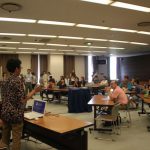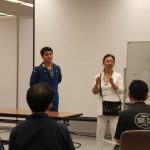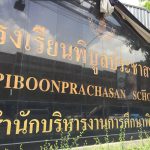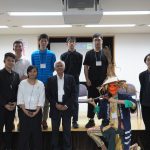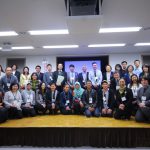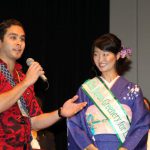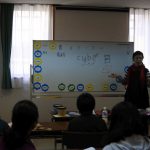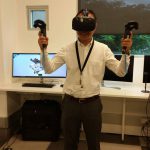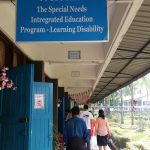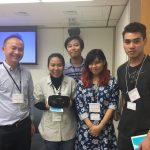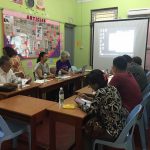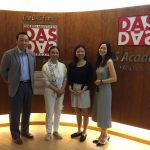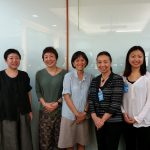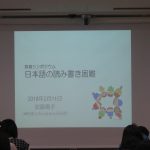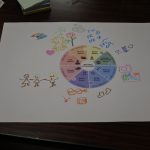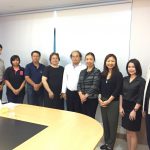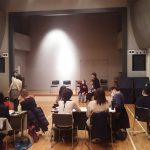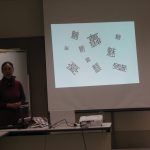We have established an NPO (non-profit organization) to promote the knowledge of developmental dyslexia, provide support and tools such as assessment and solution to the difficulties dyslexic people face.
We support dyslexic children and people through activities to alleviate their difficulties by providing the society with correct understanding of dyslexia, the parents and teachers better way to cope with dyslexic children, dyslexic children and people with necessary support whether it be PC, talking books, assisting volunteer or consulting etc.
Founders of the organization are mothers of dyslexic boys who went to study in UK and in USA, had the support there and thanks to the support were able to maximize their ability.
Founded in 2001 Oct., acknowledged by Tokyo Metropolitan Government as Certified NPO in 2017 Sept.
Our Activities
Activities of the Japan Dyslexia Society (Non-profit organization EDGE)
As a result of our activities, several laws has passed in the course of 2005 and 2006. Followed by update in 2016. Developmental Disabilities Support Act, School Education Law, Disability Independence Support Benefit Law etc. In 2016 障害者差別解消法(Japanese version of Anti discrimination Law).
Thanks to these laws many LEA have started to introduce support to dyslexics and other learning difficulties.
We have established a wide network with other groups of people who are involved in supporting developmental disabilities. This network now has a membership of more than 100,000. Japan Developmental Disabilities Network.
Our activities include
– Lobbying government (education, employment, welfare, transport, legal affairs, juvenile corrective institutions etc.)
– Policy and best practice (collaboration with LEAs)
– Employment
– Education: producing audio textbooks BEAM (Bright EDGE Audio Material), setting up a system for learning support assistants in regular classes. (Annual budget of more than 70 billion yen.),
– Guidance advice
– Assessments: using STRAW we can give advice on the speed, fluency and accuracy (only in Japanese)
– Tuition/Courses: LSA (learning support assistants) training course, MOOC supporting children with reading and writing difficulties (English), MOOC supporting children with reading and writing difficulties (Japanese in preparation)
– Events, seminars, forums, workshops on simulating dyslexic conditions
– Running campaign and raising awareness through various media
– Consultancy to LEAs
– Network with similar organizations in other parts of the world
– Publishing Booklets on Dyslexia, Newsletters
– Pier consulting sessions for Adult dyslexics
– Resource center for teachers and parents
International Media on EDGE
– Landmark dyslexia event in Yokohama aims to educate and inspire
– タイ OK Nation
– RMIT Vietnam NewsStudent virtual reality project showcased in Japan
MDA News
Dyslexia Japan
International Book on Dyslexia
Japan
Ms Eiko TODO, Chairperson, NPO EDGE : Japan Dyslexia Society
Email: edgewebinfo@npo-edge.jp
1. Context
In Japan dyslexia is considered as one of main symptoms of LD (learning disabilities). It was not until 10 years ago that the true movement towards recognition of LD started under the leadership of *Professor Kazuhiko Ueno. Parentsユ groups were formed to gather information and to investigate the possibilities. The notion of LD is still confused although the Ministry of Health and Welfare and Ministry of Education have come up with the definition respectively in 1997 and 1999. Many other symptoms such as ADHD, autism, and mentally retarded are still included at the level of LD Gakkai (Japanese Academy of Learning Disabilities) or Parentsユ Association.
Recently in October 2002, the Ministry of Education has undertaken a comprehensive survey on the incidence of dyslexia and other learning difficulties, and announced that there could be 6.3% incidence of children in the ordinary elementary schools having severe difficulties in learning despite of their level of intelligence. Unfortunately the survey was based on questionnaires which were answered by classroom teachers who are not necessarily aware of dyslexia or learning difficulties.
Lack of information and knowledge, the complex structure of Japanese language with Kana letters and Kanji, social environment where it is difficult be different from others, and educational system which forces you to learn things through rote repetition, and above all lack of assessment designed to identify dyslexia, all these combined together contributes in making it difficult to detect dyslexia in Japan.
The Japanese written language structure is not as clear as many researchers believe it to be. It is true that Kana is very clear form of sound letter correspondence where as when Kanji comes into play the situation becomes more complex. Origin of Kanji is from China so we have both Japanese way and Chinese way of reading for the same Kanji. For some Kanji you can figure out what is means from the shape but is impossible to learn how it is pronounced unless you are really good at guessing. And you are supposed to learn how to read and write about 1000 Kanji by the time you finish the elementary school.
2. Legislations and policies
There is no legislation as to dyslexia or LD in Japan yet. But there are positive move to start a SEN (special educational needs) within the framework of regular classes. Unfortunately the main focuses are for physically disabled, blind and partially sighted, deaf and hard of hearing and for the mentally retarded and so forth. This is intended only for the elementary school and lower secondary school (i.e. up to 15).
In the year 2001, the budget was allotted to the research of LD in all 47 prefectures in Japan. The purpose of the research is to designate a school per prefecture and investigate the number of LDs in each school and look for teaching method.
In the year 2002, consideration about educational support for ADHD and autism has been discussed at Researchers and Collaborators Conference. As for LD, model project were deployed in 47 prefectures in Japan, and the report will due very soon.
3. Definition and Terminology
The word dyslexia in Japan is purely used for acquired dyslexia in medical term. In educational term, LD is widely used in Japan. The definition for LD in Japan as defined by the Ministry of Education and Ministry of Health and Welfare include dyslexia, dysgraphia, and dyscalculia. We try to use the term developmental dyslexia in order to differentiate from dyslexia which is caused by accident or illness and LD which in Japan includes sometimes retarded, autism, ADHD and epilepsy.
DSM-III (American criteria for diagnosis) and ICD-10(WHO criteria for diagnosis) are well known amongst the medical doctors and psychologists. Reading, writing and calculation difficulties are listed as Learning Disorders but actually they rarely are diagnosed as such in medical institutions as there are no criteria for diagnosis. Also now ADHD and autism are attracting more attention which could be another reason for not having children being diagnosed as being dyslexic.
4. Identification and Assessment
Most local educational authorities rely only on psychological tests such as WISC III to measure the difference of verbal IQ and performance IQ, and sometimes to see the short term memory through digital span. In case of a pediatric neurologist specialized in dyslexia, WISC-III, diagram tracing of Gesell, Anomia, vocabulary test and phonetic recognition by speech therapist, clinical diagnosis such as hand writing, language comprehension are undertaken. Somewhat it is similar to Bangor test in UK. In short there is no standardized assessment for dyslexia in Japan yet.
5. Intervention and Resources
For children with special educational needs there are classes outside ordinary classes for the speech impaired and emotionally disturbed. These children commute to these classes once a week. Some LD children are included. Class for emotionally disturbed was designed to deal with children with autism (Asperger) and ADHD in order to train them in social skills in group of 3 to 4 children. There are some dyslexic children in speech impaired classes but are usually not taught correctly unless the teacher in charge is really experienced.
6. Teacher Training
Teachers from ordinary classes are one day assigned to these SEN classes. They have a brief training on how to operate the hearing aid and to undertake some hearing test. The new teachers have a training session for SEN before joining the schools in the form of lecture.
National Institute for Special Education and Education Centers located in prefectures undertake teachers training on LD. The curriculum includes understanding of LD, ADHD and other learning difficulties, how to instruct children with special needs, and creation of IEP. These teachers who have finished the course are expected to go back to their regions and be the leading figure on LD education in the area.
The Japan Dyslexia Society is now introducing a project for teacher training for dyslexic children with special emphasis on reading and writing in Japanese. Once this method is set up, the Society aims to spread the method through out Japan in collaboration with the Ministry of Educaton.
7. Advocacy Groups
LD Gakkai (Japanese Academy of Learning Disabilities),
http://www.jald.or.jp/
Japan Dyslexia Society (NPO EDGE)
https://www.npo-edge.jp/
Japan Dyslexia Assocation
http://jdyslexia.com/
NPO EDGE (Japan Dyslexia Society)
https://www.npo-edge.jp
8. Exams and Curriculum Provisions
None. There are some cases where private high schools allowed students to take oral exam but actually none of these students were allowed in. According to the survey done to Universities concerning acceptance of disabled students, there were several universities that say ヤwe do not exclude LDs from taking the entrance examinationsユ or ヤdepends on casesユ. When we investigated further asking which kind of provisions they offered their answer was ヤthere are none because we never had this happen in the pastユ.
9. Adult Provisions
None
10. The way ahead
NPO EDGE (Japan Dyslexia Society) has been approved to undertake various supporting tasks for dyslexic children and adults. The aim of this NPO is to facilitate the living of dyslexic people and their priority task is to prepare a system which is affordable and manageable. First thing the NPO has to cope with is to prepare a check list, screening test and assessment test, followed by educational materials and now-how for teachers and parents to use at school and home. Next step would be to consider English teaching method for children who would be diagnosed at junior high school. Prepare the provision for the exams. Work with private schools to include dyslexic children in their schools. Prepare working environment for dyslexic people.
Collaboration between the parties involved is another area to be exploited. Education, health and welfare, employment and other administrative bodies should all get together to work out a practical system for dyslexic people.
Diet members are forming a parliamentary group over the parties to discuss policies concerning SEN and dyslexia.
Media coverage is increasing. A famous actress who is proven to be very clever has written in her new publication that she has dyscalculia. This is the first time someone has admitted being an LD in Japan.
*Dr Junko KATO, *Dr Akira UNO are preparing a research group for developmental dyslexia together with *Dr Taeko Wydell.
References: Junko KATO, M.D., member of LD Gakkai (Japanese Academy of Learning Disabilities) and IDA(International Dyslexia Association), Clinic Kato
Masayoshi TSUGE, Ph.D., Senior Specialist, Special Support Education Division, Ministry of Education
Taeko N. WYDELL, BA (Hons), Ph.D., Reader in Psychology, Department of Human Sciences, Brunel University
Akira UNO, Ph.D., Head, Therapeutic Division, National Institute of Mental Health
12. Gallery
13. Video
RTB – Brunei TV – NPO EDGE
Contact
Email us at: edgewebinfo@npo-edge.jp


